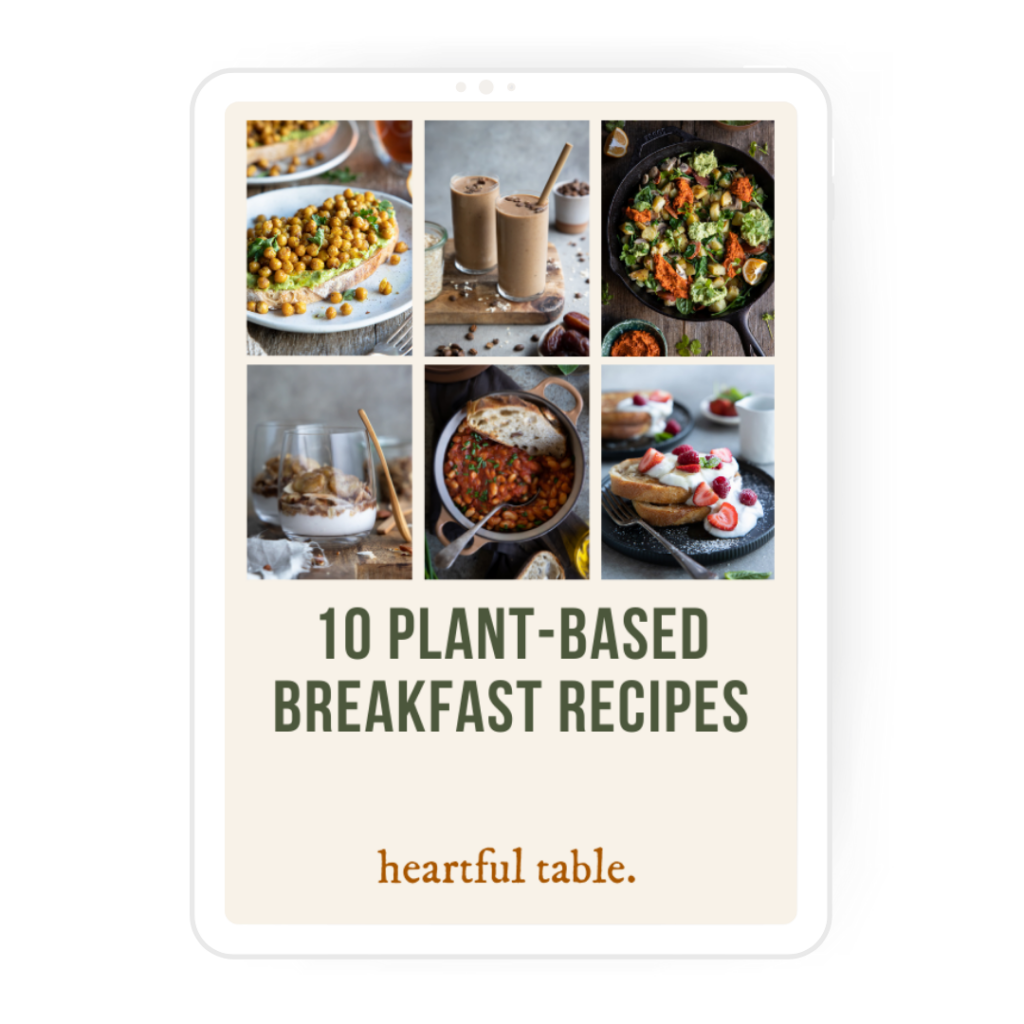Chickpeas (Garbanzo Beans): A Beginners Guide
Chickpeas, or garbanzo beans, are small, round legumes with a nutty flavour. They’re a versatile and affordable ingredient in various cuisines and are rich in protein and fibre, making them a popular choice for vegetarian and vegan dishes.
It’s worth repeating — chickpeas and garbanzo beans are the same thing. Interestingly, no one really knows why America is the only English-speaking country that uses the Spanish name garbanzo.
Some theories suggest that long before we became obsessed with hummus, the delicious spread made with chickpeas, they were simply known as canned beans from Mexico. Thus, the term garbanzo beans became popularised.
Semantics aside, we’ve created this guide to provide an overview of this amazing legume, including its health benefits, how to buy and prepare it, and farming sustainability considerations.
A very brief history of chickpeas
Chickpeas are one of the oldest cultivated plants on earth, originating in the Middle East. You see chickpea dishes like falafel and hummus everywhere, across Egypt to Israel to Lebanon.
Interesting fact: The Arabic word for chickpeas is hummus.
While hummus is often used as a simple dip in the West, it’s considered the hero on the plate in many Middle Eastern dishes, and rightfully so! It’s hard to beat the taste of a perfectly prepared hummus.
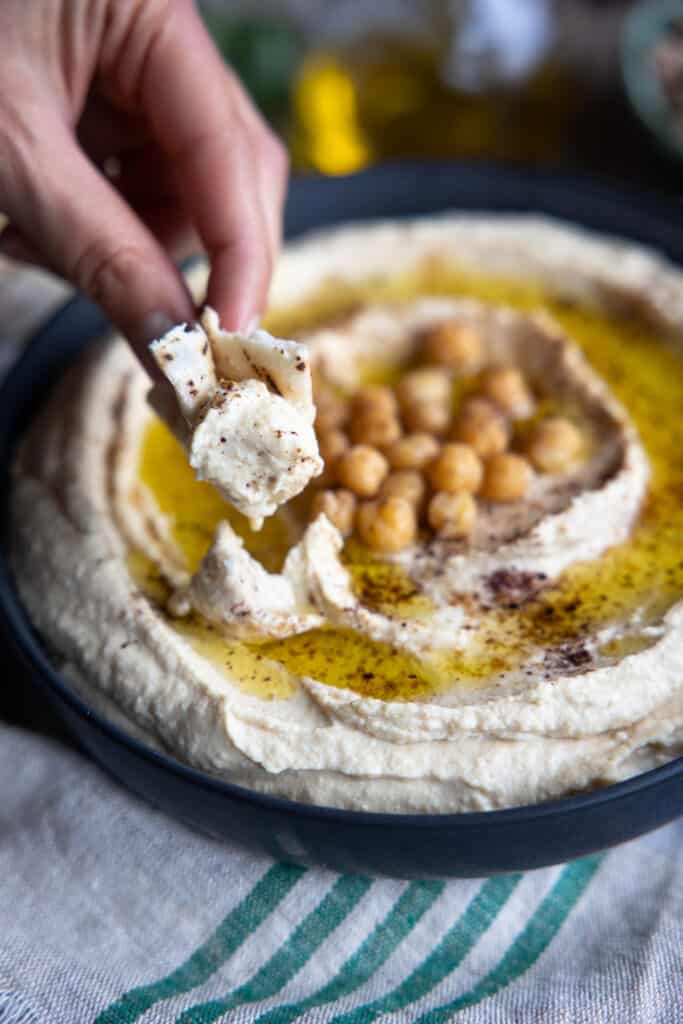
Chickpeas became popular in the West during the late 19th and early 20th centuries as they were introduced to European and North American cuisines, primarily through trade and culinary exploration. Chickpeas gained further popularity in recent decades due to the rise of vegetarian and plant-based diets.
How popular?
The global chickpea market is valued at $14.9 billion as of 2023 and is expected to grow to $19.19 billion in 2027.
How to buy chickpeas
When buying chickpeas, you have two options: dried and canned. Each one has pros and cons, depending on your preferences, convenience, and intended use. Here’s a summary of both:
1. Dried chickpeas
Pros:
- Cost-efficient: Dried chickpeas are usually more cost-effective than canned ones, providing more chickpeas per dollar.
- Customisable: You have control over the cooking process, allowing you to adjust the texture and flavour to your liking.
- Minimal packaging: Dried chickpeas are typically available in bulk, providing a simple, eco-friendly option.
- More flavour: Personally, I believe dried chickpeas have a more intense and authentic flavour compared to canned chickpeas, allowing for a richer and more enjoyable taste.
Cons:
- Longer preparation time: Dried chickpeas require soaking for several hours (usually overnight) and longer cooking times (about 1-2 hours) to become tender. This is less convenient than simply opening a can.
- Planning required: You must plan ahead to have soaked and cooked chickpeas ready for use.
- Portability: Once the chickpeas are cooked, they need to be stored in the fridge and consumed within a few days. Canned ones will last months, if not years, and it’s easier to take them to work when you’re travelling etc.
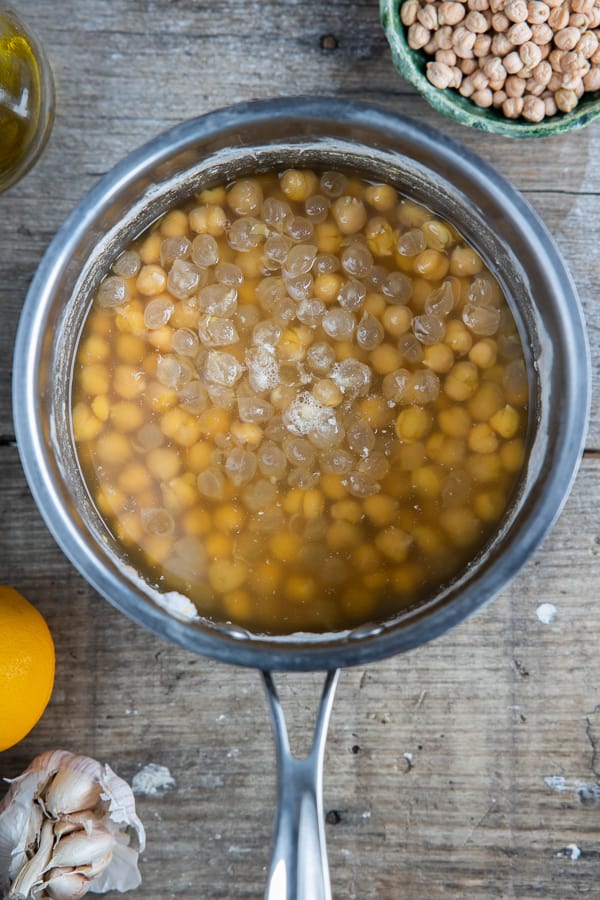
2. Canned chickpeas
Pros:
- Convenience: Canned chickpeas are ready to use, making them a time-saving option for quick meals.
- No soaking needed: Canned chickpeas do not require soaking or extended cooking times.
- Long shelf life: They have a long shelf life, making them readily available for spontaneous meal preparation.
Cons:
- Cost: Canned chickpeas are typically more expensive than dried chickpeas, considering the added cost of canning and packaging.
- Added sodium: Canned chickpeas may contain added salt, which can concern those watching their sodium intake. Look for low-sodium or no-salt-added varieties if this is a concern.
- Environmental impact: The canning process involves more packaging, which can contribute to waste if not recycled.
- Health: Some cans are still lined with harmful chemicals like BPA and other toxic chemicals.
| Aspect | Dried Chickpeas | Canned Chickpeas |
| Cost | Cost-efficient | More expensive |
| Preparation time | Longer preparation time | Ready-to-use, time-saving |
| Convenience | Less convenient | Highly convenient |
| Customisation | Versatile cooking process | Limited customisation |
| Sodium content | No added sodium | May contain added salt |
| Flavour | More natural flavour | Not as much flavour |
| Shelf life | Longer shelf life | Long shelf life |
| Environmental impact | Minimal packaging, available in bulk | More packaging, potential waste |
| Health | No exposure to harmful chemicals | Can have exposure to toxic chemicals |
| Availability | Widely available | Widely available |
The choice between dried and canned chickpeas depends on your priorities. If you want lower cost, eco-friendly, and are willing to invest time in preparation, dried chickpeas may be your preferred option.
But if convenience and time-saving are more important to you, canned chickpeas are a convenient choice, though they may be slightly more expensive and contain added sodium.
Consider your cooking habits, dietary preferences, and lifestyle when deciding which type of chickpeas to purchase. Many people (including us) find it practical to have both options on hand to suit different cooking scenarios.
Health benefits of chickpeas
Chickpeas are a good source of plant-based protein, fibre, vitamins, and minerals. According to Healthline, consuming chickpeas may help support weight management, improve digestion, regulate blood sugar levels, and reduce the risk of chronic diseases such as heart disease and type 2 diabetes.
Additionally, chickpeas promote feelings of fullness, which can aid in appetite control and healthy eating patterns.
Here are some approximate nutritional values for a 1-cup (164-gram) serving of cooked chickpeas:
- Protein: Chickpeas contain about 15 grams of protein, making them an excellent plant-based protein source.
- Fibre: A 1-cup serving provides around 12 grams of dietary fibre, which is beneficial for digestive health and helps promote feelings of fullness.
- Vitamins and minerals: Chickpeas are a good source of several vitamins and minerals, including:
- Folate (vitamin B9): Approximately 282 micrograms (71% of the recommended daily intake for adults).
- Iron: About 4.7 milligrams (26% of the recommended daily intake for adults).
- Magnesium: Around 48 milligrams (12% of the recommended daily intake for adults).
- Potassium: Roughly 291 milligrams (8% of the recommended daily intake for adults).
- Low glycemic index: Chickpeas have a low glycemic index (GI) of around 28-32, which can help regulate blood sugar levels and provide sustained energy.
- Weight management: Due to their high fibre and protein content, chickpeas can contribute to feelings of fullness and may aid in weight management by reducing overall calorie intake.
- Heart health: The combination of fibre, potassium, and low sodium content in chickpeas supports heart health by helping to regulate blood pressure and reduce the risk of heart disease.
Note: These values can vary slightly depending on the cooking method and specific variety of chickpeas.
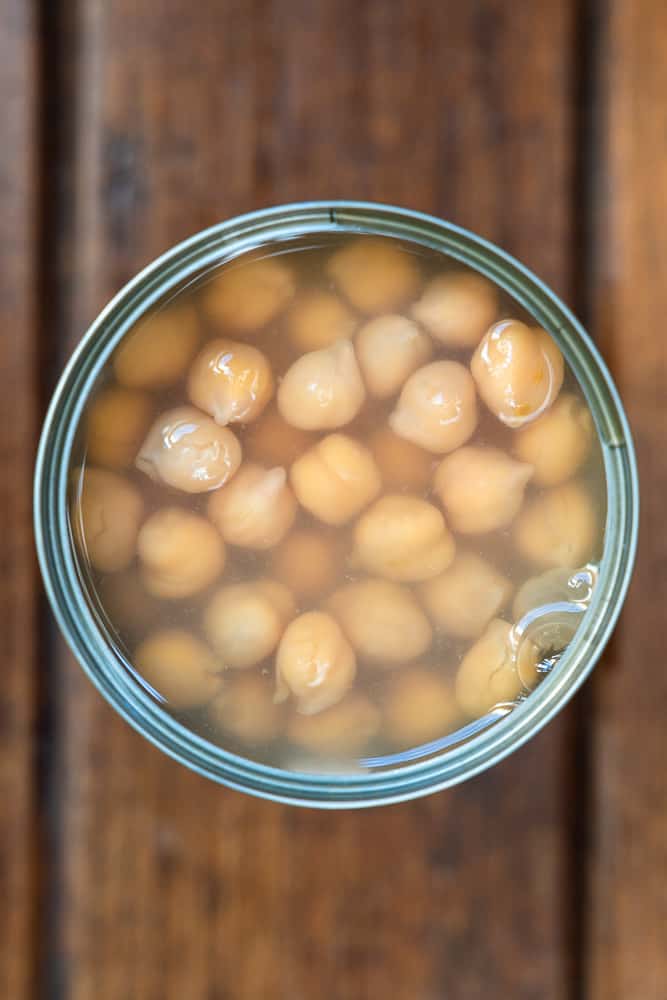
Are canned chickpeas good for you?
Canned chickpeas, like many other canned legumes, may contain lectins. Lectins are naturally occurring proteins found in many plants, and while they can have health benefits, they can also be harmful if consumed in excessive amounts or not properly prepared.
For instance, some lectins can interfere with nutrient absorption, potentially causing digestive issues or discomfort.
To reduce the potential effects of lectins in canned chickpeas, you can take the following steps:
- Rinse thoroughly: Before using chickpeas out of a can, rinse them thoroughly under cold running water. This can help reduce lectin content and remove excess salt used in the canning process.
- Cook or boil: Consider cooking or boiling the chickpeas for a few minutes. Cooking at high temperatures can further reduce lectin levels and make them safer to consume.
- Pressure cooking: Pressure cooking chickpeas can effectively reduce lectin content, as the high temperature breaks down and neutralises these naturally occurring compounds.
- Moderation: As with many foods, moderation is key. Occasional consumption of canned chickpeas, especially if they’re rinsed and cooked, is generally safe for most people. For example, consume a few times a week instead of daily.
While lectins can be a concern for some individuals, they’re not a problem for most people when chickpeas are prepared and consumed in a typical manner.
Can you eat fresh chickpeas?
Fresh chickpeas, also known as green chickpeas or garbanzo beans in their early stage, are harvested before they fully mature into the dried chickpeas commonly found in stores. The harvesting time can vary depending on the climate and region, but it normally occurs in late spring to early summer when the pods are still green and tender.
And yes, fresh chickpeas can be eaten, and they have a slightly different taste and texture than dried chickpeas. They’re crisp and have a mild, nutty flavour with a hint of sweetness. The entire pod is edible, and the peas inside are typically cooked or eaten raw.
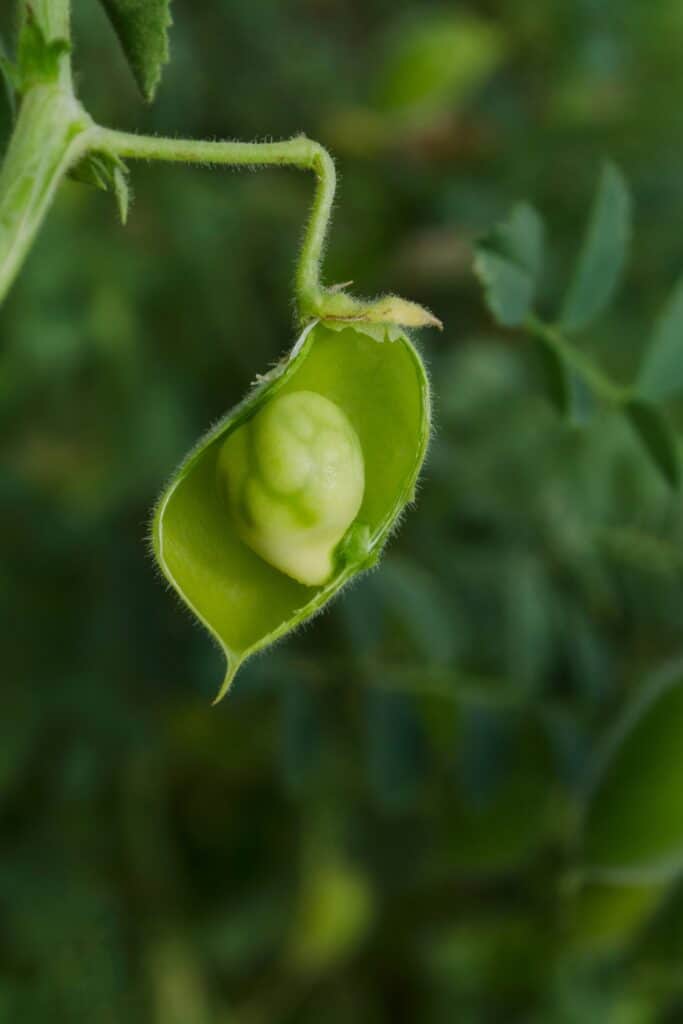
The challenge is that fresh chickpeas may not be as widely available as dried or canned chickpeas, and their availability can be limited to certain seasons and regions. You might find them in specialty or farmers’ markets, especially in areas with a Mediterranean or Middle Eastern culinary influence.
If you have the benefit of accessing fresh chickpeas (jealous!), here are some quick and easy recipe ideas:
Fresh Chickpea Salad:
- Combine chickpeas with diced cucumber, cherry tomatoes, red onion, and fresh herbs like mint and parsley.
- Toss with a simple dressing made from olive oil, lemon juice, garlic, salt, and pepper.
- Optionally, add plant-based feta cheese for extra flavour.
Fresh Chickpea Stir-Fry:
- Sauté fresh chickpeas with mixed vegetables like capsicums (bell peppers), snap peas, and broccoli.
- Add your choice of protein and stir-fry with a flavourful sauce like this sesame miso dressing.
- Serve over cooked rice or noodles.
Fresh Chickpea Hummus:
- Blend the fresh podded chickpeas with tahini, lemon juice, garlic, olive oil, and a pinch of cumin in a food processor. You may need to add a tablespoon or two of cold water to make the consistency smooth and creamy.
- Adjust the seasoning to taste with salt and pepper.
- Serve as a dip with pita bread, carrot sticks, or cucumber slices.
Fresh Chickpea Curry:
- Create a fragrant curry sauce using spices like cumin, coriander, turmeric, and garam masala.
- Add fresh chickpeas and simmer until they are tender. Season to taste.
- Finish with coconut milk and serve with rice or naan.
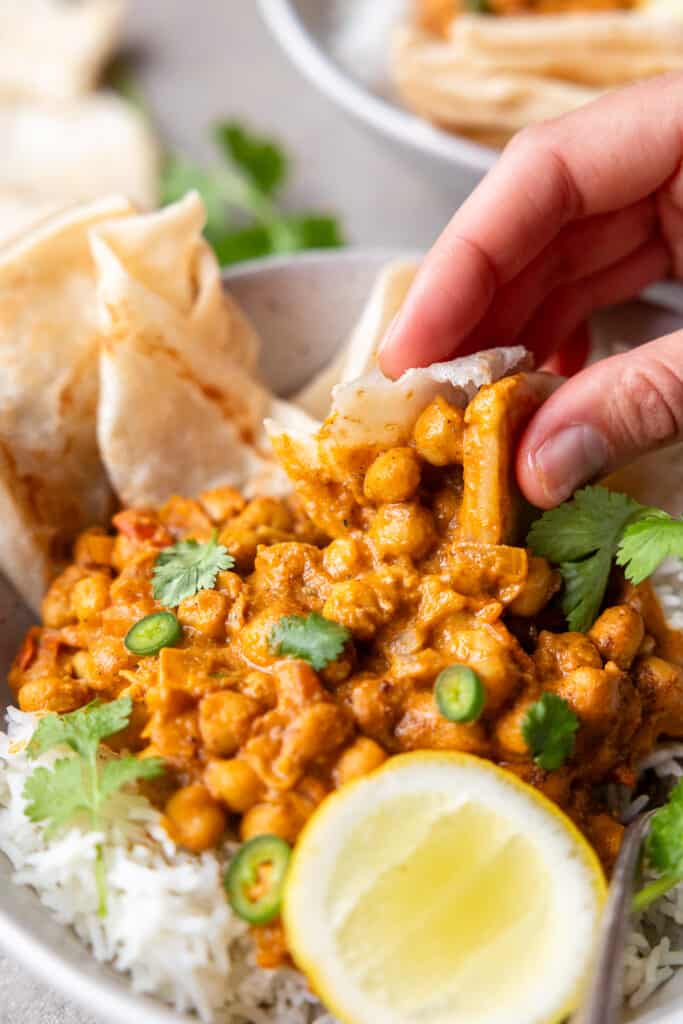
Fresh Chickpea and Herb Pasta:
- Mix fresh chickpeas with cooked pasta, roasted cherry tomatoes, and a generous amount of fresh herbs like basil and parsley.
- Drizzle with extra-virgin olive oil and season with salt and pepper.
Fresh Chickpea Snack:
- Enjoy fresh chickpeas as a healthy snack by blanching them in boiling water for a few minutes until tender.
- Season with a sprinkle of sea salt or your favourite spice blend.
Fresh Chickpea and Avocado Toast:
- Mash fresh chickpeas (slightly blanched) with ripe avocado and a squeeze of lime juice.
- Spread the mixture on whole-grain toast and top with sliced radishes and microgreens.
These recipe ideas showcase the versatility of fresh chickpeas and how they can be incorporated into various dishes, from salads to curries and snacks. Get creative and experiment with different flavours and ingredients to suit your taste preferences!
Read more: 20+ Epic Vegan Chickpea Recipes For Every Occasion
Are chickpeas sustainable?
Chickpeas are considered a relatively sustainable food source for several reasons:
- Low water usage: Chickpeas are a drought-tolerant crop, requiring significantly less water than other legumes and crops. They’re considered a water-efficient source of protein.
- Nitrogen fixation: Chickpeas can fix nitrogen in the soil through a symbiotic relationship with certain bacteria. This reduces the need for synthetic nitrogen fertilisers, which can contribute to water pollution and greenhouse gas emissions.
- Crop rotation: Chickpeas are often used in crop rotation systems, which can improve soil health and reduce the risk of soil erosion and pest infestations. This sustainable farming practice helps maintain overall ecosystem balance.
- Plant-based protein: Chickpeas are a valuable source of plant-based protein, making them an eco-friendly alternative to animal-based protein sources that typically have a higher environmental footprint.
- Demand: Chickpeas have a strong global and regional demand, which can contribute to economic stability for farmers and agricultural communities.
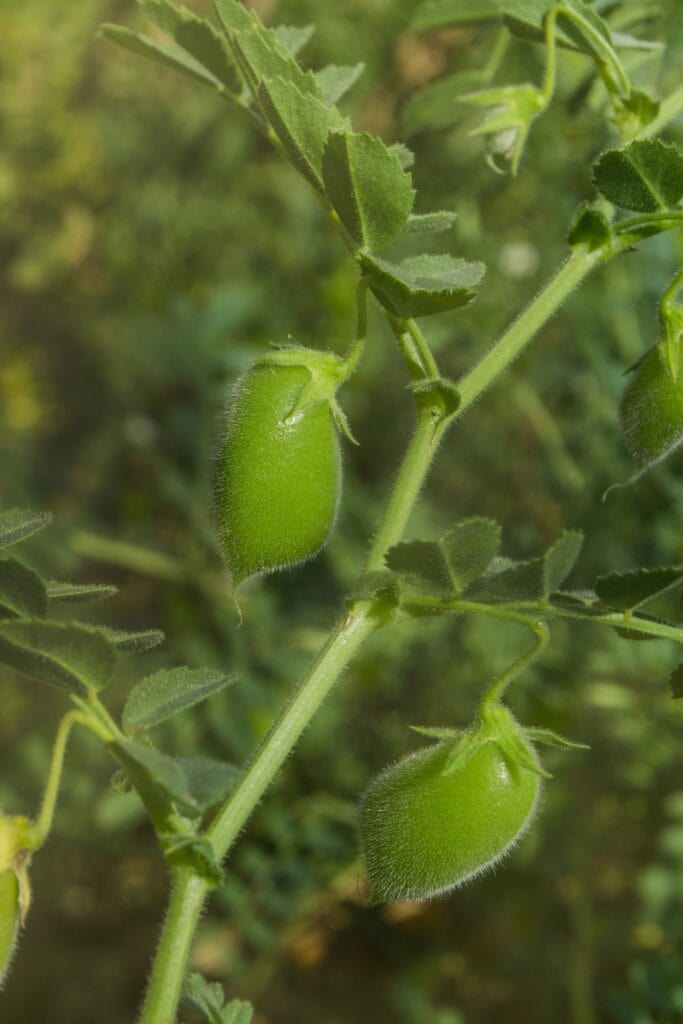
Sustainability can vary depending on the specific farming practices and regional factors. For instance, sustainable chickpea farming requires responsible water management, avoidance of excessive (or complete) pesticide use, and adherence to environmentally friendly agricultural practices.
Chickpeas can be considered a sustainable food choice when grown and managed responsibly, especially compared to other protein sources. Supporting sustainable farming practices, choosing locally sourced chickpeas when possible, and minimising food waste all contribute to the overall sustainability of this nutritious legume.
Wrapping up
Chickpeas are a versatile and nutritious addition to any diet. Whether you prefer them dried, canned, or fresh, these legumes offer many health benefits, from their protein and fibre content to their role in supporting sustainable agriculture.
Chickpeas can elevate your meals with a wide range of culinary possibilities while contributing to a more sustainable and health-conscious lifestyle. Happy cooking!

